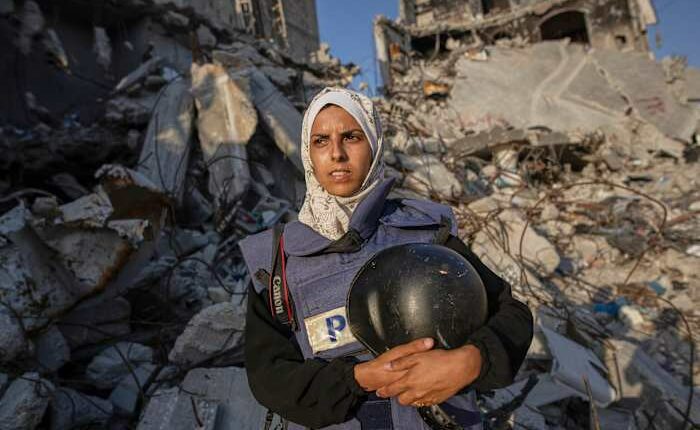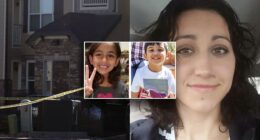Share this @internewscast.com

Mariam Dagga, a freelance visual journalist who contributed to The Associated Press and other news outlets, and who documented the intense realities of the conflict in Gaza through her compelling images, was killed on Monday in an Israeli airstrike on a hospital. She was 33 years old.
Through her photos and videos, Dagga chronicled the everyday lives of Palestinians enduring exceptional hardships: families forced from their homes, people gathering around aid deliveries, mourners at funerals, and doctors caring for injured or malnourished children.
Throughout the war, Dagga frequently stationed herself at Nasser Hospital in Khan Younis. She was one of 20 individuals, including five journalists, who lost their lives there on Monday due to Israeli strikes, as reported by health officials and various news outlets.
“She bravely worked in extremely challenging conditions to bring the world’s attention to Gaza, particularly the impact of the war on children,” expressed Julie Pace, AP’s Executive Editor and Senior Vice President. “We are deeply saddened by her passing and are actively seeking more information regarding the strike.”
The Israel-Hamas conflict has become one of the deadliest for journalists, with at least 197 media workers killed in Gaza over the 22-month conflict, according to the Committee to Protect Journalists. In comparison, 18 journalists have lost their lives in Russia’s war in Ukraine, as reported by the CPJ.
In a conversation with Eye on Palestine in April, a social media platform, Dagga urged the international community to safeguard journalists in Gaza and assist in ending the conflict. In a video statement released on Sunday, which became one of her final social media posts, she cautioned that no place in Gaza was truly safe.
“Every place is dangerous, is hit by airstrikes … In every home there is a story. In every home there is a detainee. In every home there is suffering.”
Born in Khan Younis, Dagga studied journalism and graduated from the Al-Aqsa University in Gaza. She began working as a journalist in 2015.
She is survived by a 13-year-old son who moved at the start of the war to the United Arab Emirates to live with his father.
When she wasn’t working, she was often on the phone with her son, who wanted to return to Khan Younis to be with her, she told colleagues.
At her funeral Monday, relatives and colleagues caressed her cheeks through tears. Her body lay shrouded in white, a single red flower placed gently beside her face.
Before the war, she had given a kidney to her father, her sister Nada said.
Displaced from home, she was forced to move multiple times during the war, but she never stopped working.
“She was always ready,” said AP reporter Sarah El Deeb, who is based in Beirut. “Dagga stayed close to Nasser hospital and was able to see through the cruelty of the war with the skills and patience to report on its cost to the people of Gaza, its doctors, children and mothers,” she said.
For her recent coverage of malnourished children in Gaza, Dagga won an internal AP award recognizing the strongest work produced each week.
Dagga’s editor at the Independent Arabia media outlet, Adhwan Alahmari, said she was among the most ethical, dedicated reporters and photographers. He called the strike a “flagrant violation of international laws.”
Wafaa Shurafa, AP’s senior producer in Gaza who worked with Dagga daily, said she never hesitated to help anyone. Dagga never complained despite the severe hardships she faced, was always quick with a laugh, and was deeply respected and loved by her colleagues, friends and family, Shurafa said.
Shurafa said that she missed a call from Dagga after the first strike hit the hospital on Monday. When she called back, Dagga didn’t answer.
“I was nervous at first because she didn’t answer, I was super worried, I thought she was filming, but I never imagined she was killed,” she said.
“She didn’t answer, and she never will again.”
———
Magdy reported from Cairo, Mednick reported from Tel Aviv, Israel. Brian Melley in London contributed to this story.
Copyright 2025 The Associated Press. All rights reserved. This material may not be published, broadcast, rewritten or redistributed without permission.













